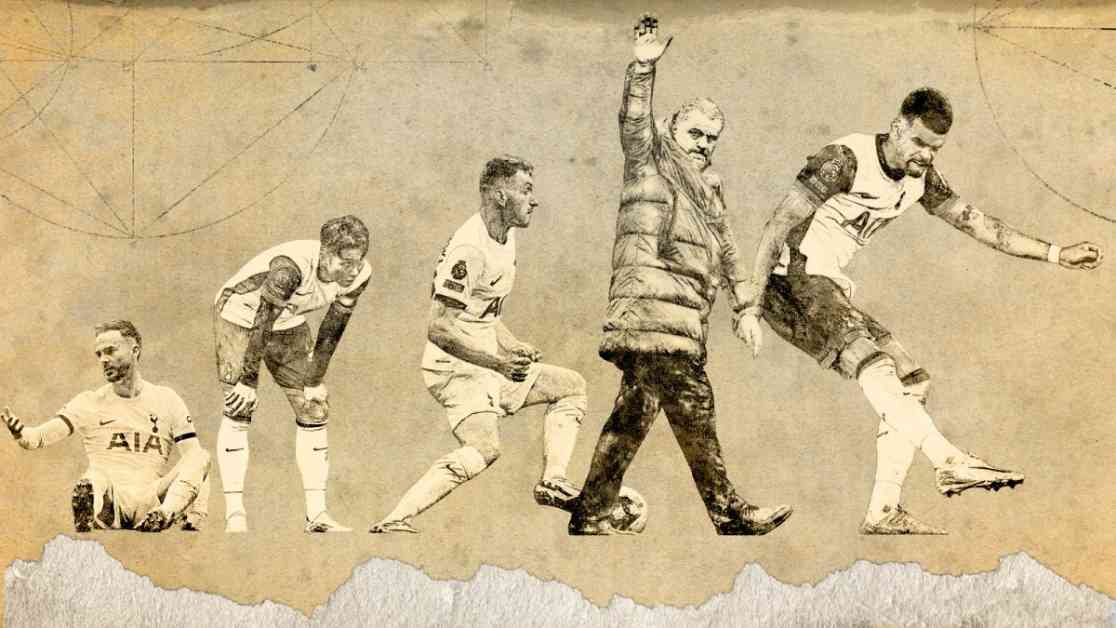Ange Postecoglou’s Spurs Evolution: Dejan Kulusevski’s New Role
Ange Postecoglou, the manager of Tottenham Hotspur, has been making significant changes to his team this season, with a particular focus on the role of Dejan Kulusevski. Postecoglou’s approach to coaching and tactics has been evolving, as he aims to establish a winning formula for his team. Kulusevski’s shift from the right wing to an attacking central midfield position has been a key part of this evolution, with the player thriving in his new role.
Postecoglou’s Journey and Influence
Ange Postecoglou’s coaching journey has been marked by his commitment to a style of play that emphasizes dominating possession, scoring goals, and playing with intensity. His experiences early in his career, including watching Australia defeat England in a cricket match and observing training sessions at top clubs like Manchester United, have shaped his approach to coaching. Postecoglou’s success with South Melbourne and his encounters with top clubs like Manchester United have provided him with valuable insights that he has applied to his current role at Tottenham Hotspur.
Evolution of Tottenham’s Playing Style
Postecoglou’s influence on Tottenham’s playing style has been evident this season, with the team showing a willingness to adapt and make changes to improve their performance. The shift in Kulusevski’s positioning from the wing to central midfield is a clear example of Postecoglou’s strategic thinking and willingness to experiment with player roles. This change has allowed Kulusevski to showcase his skills and contribute more effectively to the team’s overall performance.
Impact of Kulusevski’s New Role
Dejan Kulusevski’s transition to a central midfield role has had a significant impact on Tottenham’s midfield dynamics and attacking play. By playing in a more central position, Kulusevski has been able to utilize his dribbling abilities and offensive instincts to create scoring opportunities for his team. His partnership with James Maddison in the midfield has added creativity and dynamism to Tottenham’s attacking play, providing a new dimension to their gameplay.
Tactical Adjustments and Player Development
Postecoglou’s tactical adjustments, such as moving Kulusevski to central midfield and reshaping the team’s attacking structure, have shown his willingness to adapt and innovate to improve his team’s performance. The strategic positioning of players like Maddison, Solanke, and Son Heung-min has helped create a more cohesive and dynamic attacking unit, allowing Tottenham to play with greater fluidity and purpose on the pitch. These changes reflect Postecoglou’s commitment to developing his players and finding the best system to optimize their abilities.
Challenges and Future Prospects
While Tottenham’s recent victories have been promising, challenges remain as the team aims to maintain their momentum and build on their early success. Postecoglou’s emphasis on high-intensity training and attacking football has raised concerns about player fatigue and injury risks, prompting adjustments to the team’s training and medical departments. Finding the right balance between tactical innovation and player welfare will be crucial for Tottenham as they continue their campaign under Postecoglou’s guidance.
In Conclusion
Ange Postecoglou’s evolution of Tottenham Hotspur’s playing style and tactics has been a key storyline of the season so far. The strategic changes made by Postecoglou, including Kulusevski’s new role in central midfield, have reinvigorated the team and provided a platform for success. As Tottenham navigates the challenges of the season, Postecoglou’s vision and leadership will be instrumental in shaping the team’s future prospects.




